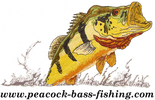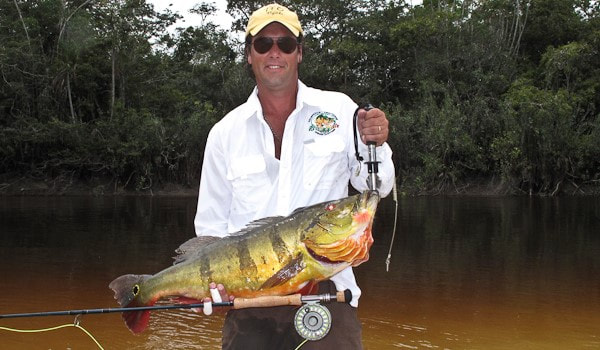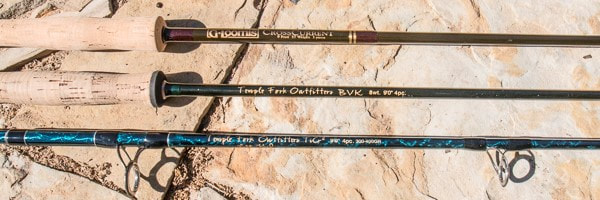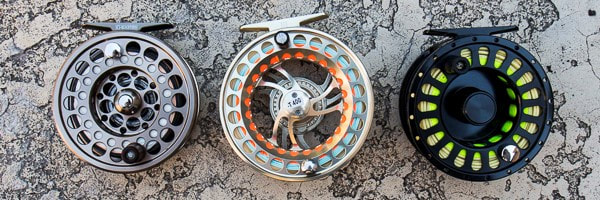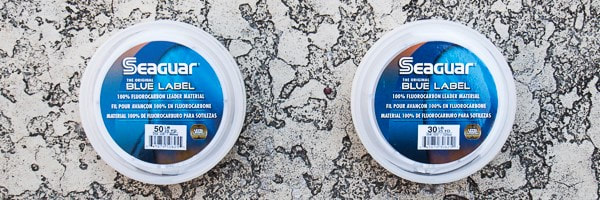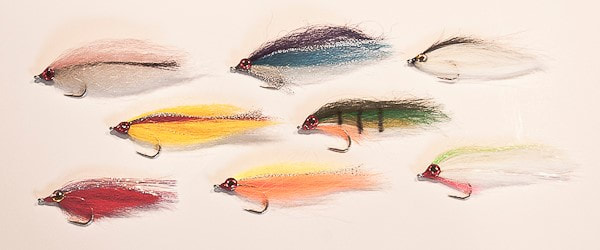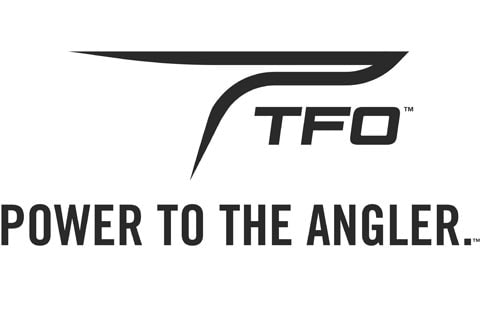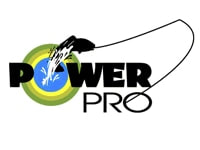FLY FISHING FOR PEACOCK BASS
ie: “ This game is awesome!”
Peacock bass on a fly rod? Only if you want to catch a lot of fish and experience the reality of turning a two piece fly rod into a 4 piece fly rod! Peacock bass fishing is fast becoming the top item on the fly fishing junky’s bucket list. Although fishing for this hard fighting fish is usually associated with big top water lures, heavy bait casting rods and reels loaded with 80 lb test braided Kevlar line, Peacocks are the perfect target for the fly fishermen as well. Aggressive, hard fighting and always willing to do battle make for a fly fisherman’s dream fish.
Finesse in the presentation of bait is key to an angler’s success and no other type of fishing can offer the lifelike presentation a fly fisherman can. The peacock bass exhibits power usually found in few salt water fish and has the ability to turn itself “inside out” when you have its head coming your direction to make another powerful run. As members of the predatory African Cichlid family of fish, these fish are structure oriented and once stuck with the hook, they are hell bent to get back into cover. The fisherman’s first priority in the first few seconds of the fight is to hang on and then to get the fish into open water where the Peacock has nothing to hang up on and break off. Braided or furloughed leaders in the 25 – 40 lb class are the order of the day along with 9 & 10 wt rods and fly reels with smooth, strong drags. The majority of Peacock you will catch on the fly rod will be in the 2 – 8 lb class, but don’t let your guard down as fish in the high teens and 20 lb class are not unusual. Fly fishing great Lefty Kreh has stated that peacock bass were one of the greatest game fish he had ever enjoyed fishing for! The majority of the rivers you will fish in Brazil’s Amazon watershed will be heavily tannin stained & thus most of your fishing will be blind casting to structure and points. A few of the tributaries will be gin colored which allow sight fishing, but these will be the exception rather than the rule while fishing in Brazil’s Amazon.
Rick Pope, President of Temple Fork Rods, tells the story of hooking up with a good peacock in open water over a spawning bed and after several minutes of give and take, mostly take that is, the fish spooled him and the line popped off the reel, thru the guides and headed downriver. His guide quickly started the boat and ran about 50 yards, saw the line lying on the water, managed to pick it up, fed the line back thru the guides, tied it back on the spool of the reel and eventually landed the fish, a very nice 15 lb Peacock! Rick said in all of his fishing experiences, this was the first time that had ever happened to him.
Finesse in the presentation of bait is key to an angler’s success and no other type of fishing can offer the lifelike presentation a fly fisherman can. The peacock bass exhibits power usually found in few salt water fish and has the ability to turn itself “inside out” when you have its head coming your direction to make another powerful run. As members of the predatory African Cichlid family of fish, these fish are structure oriented and once stuck with the hook, they are hell bent to get back into cover. The fisherman’s first priority in the first few seconds of the fight is to hang on and then to get the fish into open water where the Peacock has nothing to hang up on and break off. Braided or furloughed leaders in the 25 – 40 lb class are the order of the day along with 9 & 10 wt rods and fly reels with smooth, strong drags. The majority of Peacock you will catch on the fly rod will be in the 2 – 8 lb class, but don’t let your guard down as fish in the high teens and 20 lb class are not unusual. Fly fishing great Lefty Kreh has stated that peacock bass were one of the greatest game fish he had ever enjoyed fishing for! The majority of the rivers you will fish in Brazil’s Amazon watershed will be heavily tannin stained & thus most of your fishing will be blind casting to structure and points. A few of the tributaries will be gin colored which allow sight fishing, but these will be the exception rather than the rule while fishing in Brazil’s Amazon.
Rick Pope, President of Temple Fork Rods, tells the story of hooking up with a good peacock in open water over a spawning bed and after several minutes of give and take, mostly take that is, the fish spooled him and the line popped off the reel, thru the guides and headed downriver. His guide quickly started the boat and ran about 50 yards, saw the line lying on the water, managed to pick it up, fed the line back thru the guides, tied it back on the spool of the reel and eventually landed the fish, a very nice 15 lb Peacock! Rick said in all of his fishing experiences, this was the first time that had ever happened to him.
Fly Rods
Fly rods used for peacock bass are usually in the 8 – 10 wt class, 8 ½ to 9 ½ ft long with a powerful butt and a tip stiff enough to throw a 4 – 6 inch fly tied on a 4/0 salt water style hook. 2 – 8 lb fish will make up the majority of the fish you will catch on a fly rod. An 8-weight rod has plenty of power to roll over the big flies you may want to throw and will handle fish up to say 12 lbs. A 9-weight is a better all around rod so if you hook up with a peacock in the mid to high teens it will be strong enough to keep him out of the brush. If you anticipate getting the opportunity of some monster peacocks in the high teens or the 20 lb class, you will want to have a 10-weight in your arsenal. Fish in the teens and 20’s will astound you with their power and brute strength. Modern 3- and 4-piece rods are plenty strong and durable and are much easier to transport into the backcountry of the Amazon. I would recommend a 9wt rod for anglers that are used to throwing a 5- or 6-weight for trout as suddenly jumping up to a 10-weight can wear you out if you are not used to it. For fly fishermen accustomed to throwing a heavy rod I would recommend the use of a 10-weight. When fishing for peacock bass you will often bring your rods home in more pieces that you left with, so be sure to bring several fly rods with you so that you will have at least one to use the last day of your trip!
Fly Reels and Lines
These fish are as powerful as any freshwater and many saltwater fish. A good heavy large arbor reel is a necessity to play the peacock game and come away successful! I have seen these fish bend the spools of some rather expensive reels that were lightly constructed of intricately machined aluminum. Bring a reel you would use for permit, big redfish or king salmon when you are rigging up for peacock bass. The reel need not hold three or four hundred ft. of backing as peacock bass do not usually make long scorching runs unless you are in open water over a spawning bed, but rather short very powerful runs trying to get back to the cover they feel safe in. 150 yds of 50 lb backing is normally sufficient. A good smooth drag is a necessity when you are fighting fish 10 lbs or better off the reel.
The majority the time you will fishing a floating or sinking tip fly line unless you wish to fish a deep point in the main river. Most of the rivers you will be fishing in Brazil’s Amazon will be richly tannin and Peacock Bass are basically shallow water ambush style feeders so most of the waters you will be fishing in will be 2 – 8 ft deep. The exception to the rule is fishing in the mid to late afternoons on a day with little cloud cover and high skies. These conditions will heat up the shallow water near the shore several degrees and the larger fish tend to move into the middle of the lagoons where the water is a little cooler when the sun is high overhead. This is another instance of where you may want to go to your sinking line. You have traveled 4,000 miles to fish in the middle of Amazon, bring all your weapons to do battle! Saltwater style fly lines tend to be “harder” and stiffer than freshwater line and tend help roll over big flies better in the hot conditions of the Amazon.
The majority the time you will fishing a floating or sinking tip fly line unless you wish to fish a deep point in the main river. Most of the rivers you will be fishing in Brazil’s Amazon will be richly tannin and Peacock Bass are basically shallow water ambush style feeders so most of the waters you will be fishing in will be 2 – 8 ft deep. The exception to the rule is fishing in the mid to late afternoons on a day with little cloud cover and high skies. These conditions will heat up the shallow water near the shore several degrees and the larger fish tend to move into the middle of the lagoons where the water is a little cooler when the sun is high overhead. This is another instance of where you may want to go to your sinking line. You have traveled 4,000 miles to fish in the middle of Amazon, bring all your weapons to do battle! Saltwater style fly lines tend to be “harder” and stiffer than freshwater line and tend help roll over big flies better in the hot conditions of the Amazon.
Tippets
Peacock bass are like fishing for a Rottweiler that hasn’t eaten in a week, not much is going to scare him away from a meal! Believe me, these fish are not leader shy! 6 to 7 feet of heavy leader is what you want to use as you have to worry about abrasion if these fish get back into the brush or wrap you around a stump or log. Peacock bass which have no more teeth than a black bass, feel like 30 grit sandpaper so you don’t have to worry about steel leaders. This is a good venue for braided or furled leaders, or a straight up chunk of 35 – 50 lb mono or fluorocarbon. Check the terminal end of your leader occasionally as Piranha will swipe at your fly and nick the leader.
Flies
The basis of a good fly is the hook on which it is tied. I have seen peacock bass open up and/or mash 4/0 treble hooks on Woodchopper type lures as well as break them in half! Premium salt water quality hooks such as Gamakatzu or the equivalent are a must. I look for a 3/0 or 4/0 hook when tying peacock flies as these fish have a big “roll” lip and you must get the hook firmly planted behind it to land them. Big Deceiver and Clouser style streamers are the most common type of fly used for peacocks in Brazil’s Amazon. Big bunny leaches will also work, but not as well. Peacock bass feed on the juvenile of their own species as well as fresh water Sardines, Aracu and a myriad of other bait fish. I strongly believe that the addition of holograph eyes to streamers will generate nearly double the number strikes you get compared to flies without eyes. The guides in the Amazon prefer flies with red eyes over clear or yellow eyes and they are the ones on the water every day.
There are over 2,500 species of fish in the black water rivers of the Amazon Basin. This area of Brazil’s Amazon is the freshwater tropical fish capital of the world. Over 40 million are exported to markets around the world each year and 50% of these are Cardinal Tetras. Consequently, although 6” drab green patterns work well as do white with some flash in them plus immature Peacock patterns, do not be afraid to use 2-4” flies with lots of reds, pinks and yellows. The only color I have not had much luck with is black as blacks just seem to disappear when fishing in these tannin colored waters. Retrieve the flies in short quick jerks to instill Peacock's instinct to chase. When fishing subsurface, all your retrieves should be quick and jerky. If the fish are reluctant to hit, try 3 quick strips and then let the fly sink for the count of 3. If the fish are following the fly but won’t hit it, quite often they will hit the fly as it falls. Bring plenty of flies with you as the Piranha may take a liking to them and trim them down to the hook with almost imperceptible hits. If you run into a school of piranha…MOVE…or your supply of flies will dwindle quickly. The length of your flies can vary from the 5 – 6 inch ones we used when we first started to fish, trying to imitate big baitfish for big peacocks, to the 3 – 4” flies we have evolved into using imitating tropical fish and smaller baitfish that are much easier to throw and produce just as well on big peacocks. Over the years we have found the bigger flies do not deter the smaller peacock bass from hitting as a 2 lb fish will hit a 6” fly just as readily as he will go for a 2” fly and the same goes for the “grande“ peacocks. Favorite colors include the ever reliable yellow and red Mickey Finn pattern, red and white, green and white, pink and white, all white with a lot of flash, and green and maroon.
And yes, top water presentations will catch fish, just not as well for the big peacocks or big numbers. Like most fish, 90+ of their feeding is done subsurface, you are really trying a very low percentage technique when you’re using a top water presentation. Big top water salt water poppers and sliders will catch fish as will Dahlberg Divers, but the return on your time investment and effort in trying to throw these big “air dams” is usually not worth your while.
There are over 2,500 species of fish in the black water rivers of the Amazon Basin. This area of Brazil’s Amazon is the freshwater tropical fish capital of the world. Over 40 million are exported to markets around the world each year and 50% of these are Cardinal Tetras. Consequently, although 6” drab green patterns work well as do white with some flash in them plus immature Peacock patterns, do not be afraid to use 2-4” flies with lots of reds, pinks and yellows. The only color I have not had much luck with is black as blacks just seem to disappear when fishing in these tannin colored waters. Retrieve the flies in short quick jerks to instill Peacock's instinct to chase. When fishing subsurface, all your retrieves should be quick and jerky. If the fish are reluctant to hit, try 3 quick strips and then let the fly sink for the count of 3. If the fish are following the fly but won’t hit it, quite often they will hit the fly as it falls. Bring plenty of flies with you as the Piranha may take a liking to them and trim them down to the hook with almost imperceptible hits. If you run into a school of piranha…MOVE…or your supply of flies will dwindle quickly. The length of your flies can vary from the 5 – 6 inch ones we used when we first started to fish, trying to imitate big baitfish for big peacocks, to the 3 – 4” flies we have evolved into using imitating tropical fish and smaller baitfish that are much easier to throw and produce just as well on big peacocks. Over the years we have found the bigger flies do not deter the smaller peacock bass from hitting as a 2 lb fish will hit a 6” fly just as readily as he will go for a 2” fly and the same goes for the “grande“ peacocks. Favorite colors include the ever reliable yellow and red Mickey Finn pattern, red and white, green and white, pink and white, all white with a lot of flash, and green and maroon.
And yes, top water presentations will catch fish, just not as well for the big peacocks or big numbers. Like most fish, 90+ of their feeding is done subsurface, you are really trying a very low percentage technique when you’re using a top water presentation. Big top water salt water poppers and sliders will catch fish as will Dahlberg Divers, but the return on your time investment and effort in trying to throw these big “air dams” is usually not worth your while.
